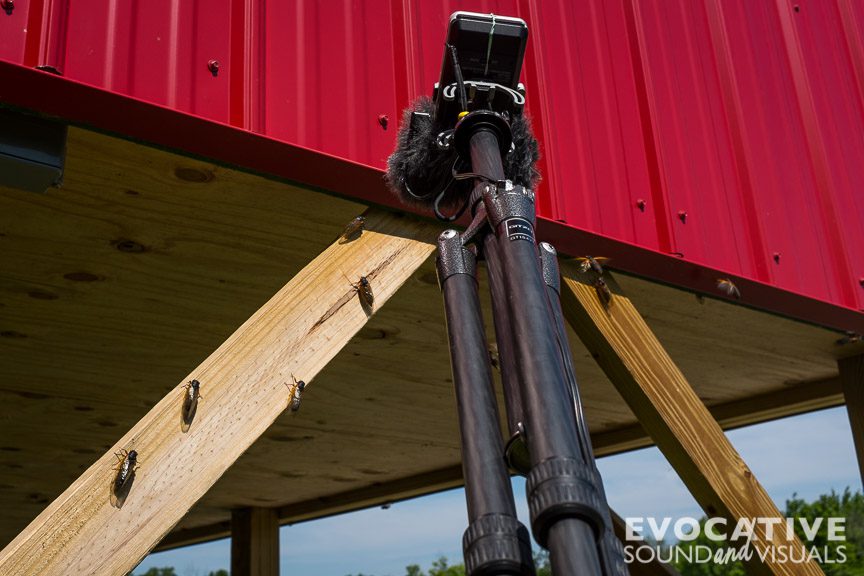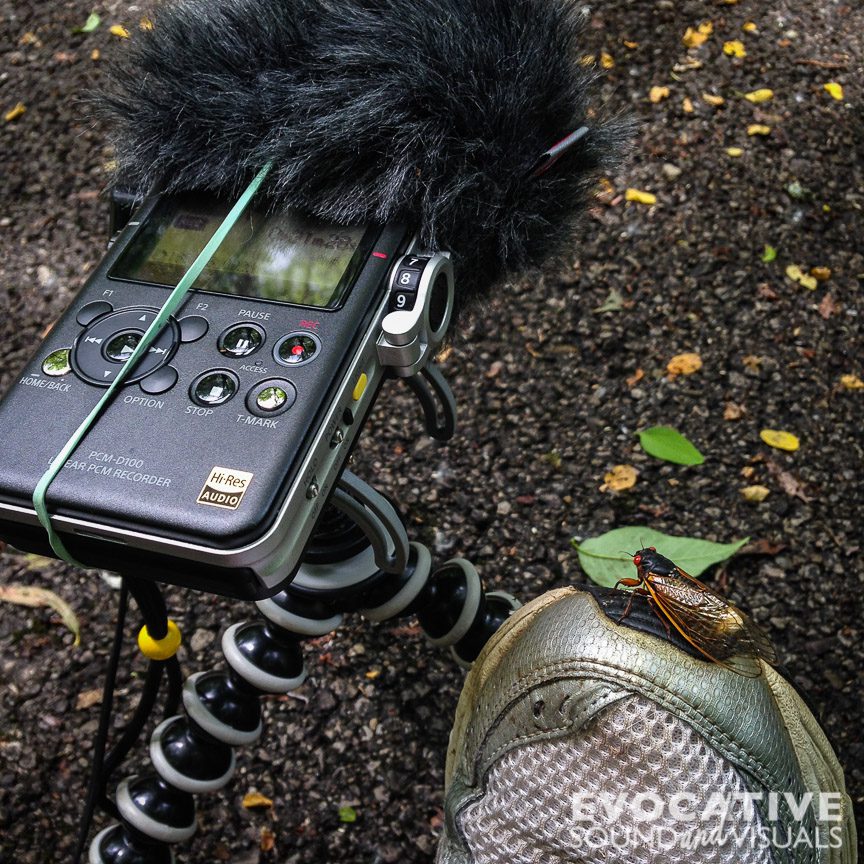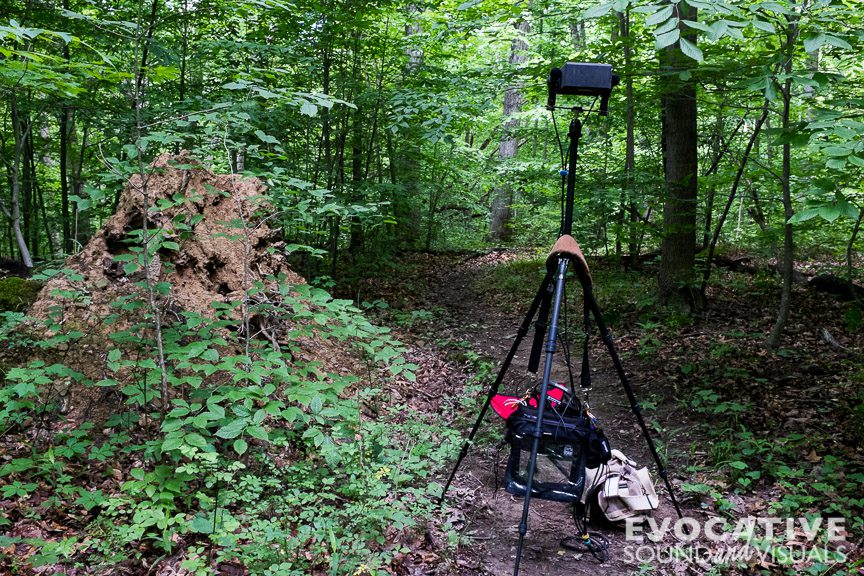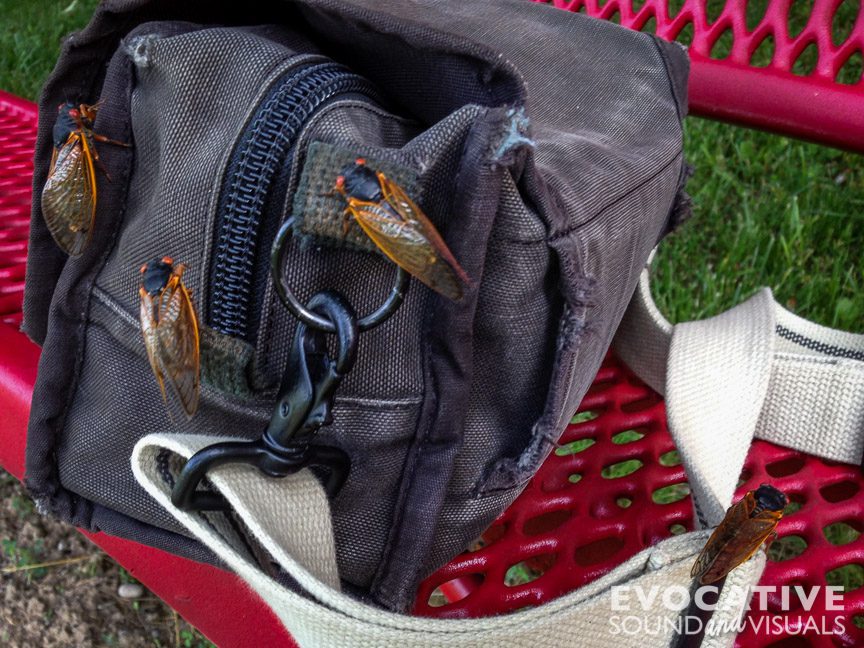Periodical Cicadas features the sounds of millions of periodical cicadas singing en masse. This library has extended drones and screeches, up-close wing-fluttering pass bys and multiple pharaoh (mating) calls. Two broods, XXII and V, were recorded in 2014 and 2016 respectively.
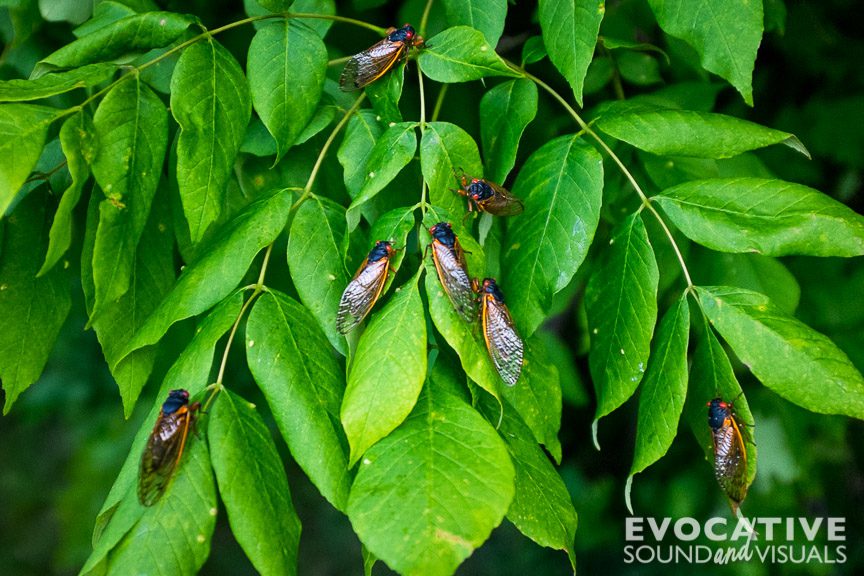
Hear cicadas fluttering inches away from my microphones. I climbed an 80-foot tall fire tower to be where the cicadas sang their loudest. I also positioned microphones atop wide vistas and in open fields adjacent to woods to capture these insect’s near-deafening drones.
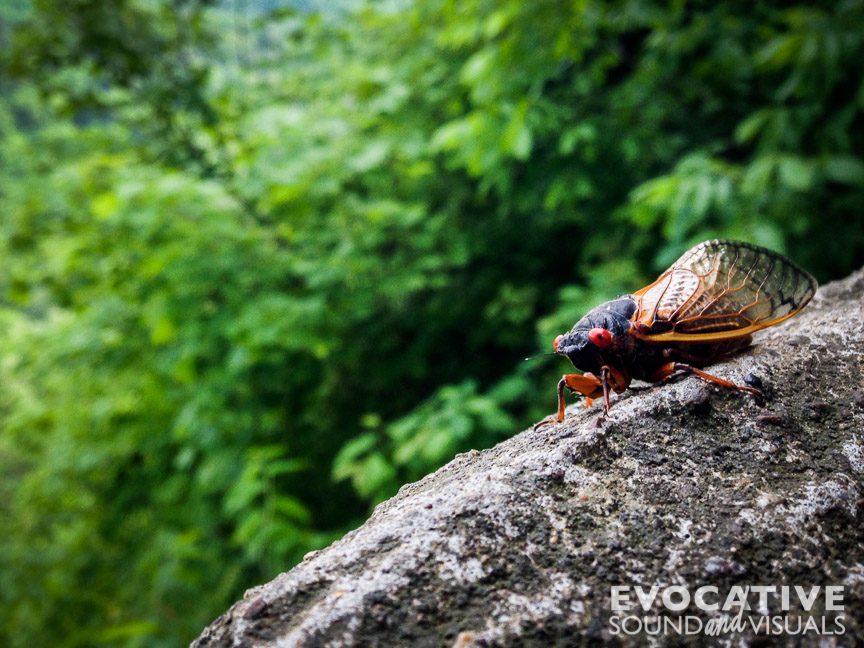
I thoroughly enjoyed making this library. It’s a small library packing a big sound. I hope you enjoy using these insect sounds for your next project.
Brood XIV re-emerges in southeast Ohio next year. I’m looking forward to traveling there to hear the show.
Listen to a Preview
Library Specifics
- 10 sounds, 1.48 GB, 43 minutes
- Metadata (Sound and BWF) included
- UCS compliant
- Free of man-made noise pollution
- No compression was used
- Mics/recorders used: Sony PCM M10 with Luhd A/B, Sony PCM M10/Sound Devices Mixpre-D with Line Audio CM3 in ORTF and Audio Technica 3032 in baffled omni
Strange Broods
Brood V includes the species Magicicada cassini, Magicicada septendecim, and Magicicada septendecula, according to the University of Connecticut. They emerge once every 17 years. I recorded them in north-central and southeastern Ohio in May and June 2016.
Brood XXII, also known as the Baton Rouge Brood, includes the species Magicicada tredecim, M. tredecassini and M. tredecula, according to the University of Connecticut. These periodical cicadas emerge once every 13 years. I recorded them north of St. Francisville, Louisiana in April 2014. They are expected to emerge again in 2027. See Cicada Mania for more information about this brood and cicadas in general.
Why are They Called Pharaoh Calls?
A periodical cicada’s high-pitched mating call sounds like the onomatopoeia weeeee-whoa or pha…..raoh, pha…..raoh in repetition. It is a droning sound that drops off sharply. I was able to capture these sounds up close. They’re fascinatingly creepy to hear at this distance.



